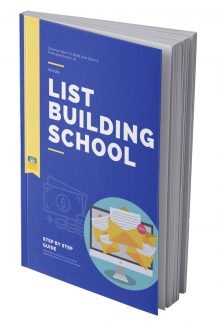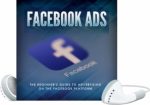 License Type: Master Resell Rights
License Type: Master Resell Rights  File Type: ZIP
File Type: ZIP
 SKU: 63889
SKU: 63889  Shipping: Online Download
Shipping: Online Download
Sample Content Preview
Chapter 1: Why Build an Email List
An email list is like a handy list of subscribers. It is a list of email IDs that you have gathered from people, usually over time. These are people who have seen what you have to offer and have allowed you to send information whether in the form of updates or promotions for a service that you offer directly to their inbox. And you need not be running a business to have an email list.
For example, many bloggers maintain email lists. So, every time they post a new piece on their blog, the content of that post goes straight to the inbox of their subscribers which saves the receiver the hassle of having to check the blog for updates. It is also used by those who send out newsletters. It is basically a database of email IDs that can be tapped to send bulk updates. This is used as a strategy for businesses to build a relationship with their customers and is a part of email marketing.
For those of you who understand numbers better, here is a figure. According to Direct Marketing Association, for businesses in the USA alone, this strategy results in 4,300 percent ROI or return on investment.
Now, we live in a world of bots and paid advertising. There are many avenues out there where you can shop for email lists. There is a price for it, of course, but it results in an instant group of subscribers. This is a very attractive deal for a lot of businesses and services. But here’s the catch. When you build an email list from scratch, you get a list of people who have seen what you have to offer and subscribed to it out of genuine interest.
On the other hand, when you buy a list, you are likely reaching out to individuals who have no interest whatsoever in your product or service. That makes them more likely to redirect your email into the spam folder. So, if you want to buy a list, you may very well go ahead with it but don’t be looking at that 4,300 percent return. When you get authentic subscribers in your list, your chances of turning them into paying customers is also highly likely. And isn’t that the whole point?
Now, it is important for the uninitiated to know that the benefits of an email list are criminally underrated.
1. For starters, emails are a very personal means to communicate with your consumer. You get to take your product or service directly into their inbox. While there is a ranking system with a chance of priority email blocking your way, you still get to be on top of the rest of the emails. And if you build a loyal base, you might even be segregated into a folder that grabs your consumer’s attention right away.
2. When you build an email list from scratch instead of buying a database, your consumer goes through a simple process of filling up a form to sign up for your emails. In this case, they are clearly interested in your product or service. That makes them more open to your communication. It means they are reading and willing to invest time in what you have to offer. That is the first step towards getting someone to put their money where their mouth is.
3. When you depend on social media giants like Google and Facebook, you need to stay on top of their strategy. In fact, you are at the mercy of their prioritizing techniques. This means every time they change their algorithms, you have to change your SEO tactics to be on top of their lists. Through email lists, you can bypass that whole thing and get your message to your consumer irrespective of a third-party’s strategy. You won’t be at their mercy which is a huge bonus.
4. With email lists, over time, you know your audience well. That gives you insights into what is working for your brand. Based on that information, you can make your content more specific to the consumers who are interested in your product or service.
When you decide to level up and give them offers, you will know exactly what kind of discounts and coupons will appeal to them. This way, you can build on an existing relationship in the future. That is an asset in every business. This process is called segmentation.
5. Since you will not be advertising publicly and arbitrarily, what makes it to the inbox often becomes a personal message to the specific consumer. This gives you room to make interactives in the future. And since it is not on a social media timeline or newsfeed, you get to give and receive information with some level of privacy. In a world where trust is difficult to build, you already have one thing in your favor. That allows you to build a genuine connection as a brand.
6. There are people who stay off social media but there is no internet user without an email account. So, while other businesses talk about Facebook and Twitter followers, you have a broader audience to target. The other advantage is the fact that Facebook likes and retweets don’t always mean that they are going through the communique let alone endorse your product or service. That’s why we are increasingly seeing official accounts state in their bio that RTs are not endorsements. Big brands understand this better than anyone else. That is why many businesses have an email list at the heart of its outreach strategies. In fact, you might have also seen campaigns on social media that encourage you to sign up for specific brand information. So, even if many brands start talking about themselves on social media, the ultimate aim is to get into your inbox.
As a business, it is important to understand that people subscribe more easily that they unsubscribe. So as long as you are giving them valuable content in the inbox, you will stay right there where you belong.
Chapter 2: How to Build an Email List
Now let’s move on to the tools you need to build an email list. The name of the game is email marketing and it’s a great way to build loyal consumers, right? So, you put out an ad on a social media platform and it’s getting a good level of engagement. You’re happy with it. A lot of e-commerce businesses use sign-up forms that are created by experienced marketers to get them started. It usually starts either with a pop-up ad or a Facebook ad to get the consumer going.
But how do you convert that momentary interest into lasting loyalty? You get them to a place where they will get more of what they just saw. From promotional offers to showcasing products and services or telling personal stories that have them hooked to your narrative, there are a lot of things you can do to get consumers to stay with you and in time, pay for what you’re offering.
But sometimes, the steps from clicking on a pop-up to signing up for an email list can be a long one. People don’t like to fill out long forms that ask too many questions. So, you need to start by making it easy for them. Let’s go through the process of building an email list that’s easy for you and the consumer.
The first step is to have a landing page with a unique/strong domain name. When your consumer clicks on the pop-up ad, they need to go to a place that gives them more of what they just saw. This is one of the most useful ways to build an email list. Treat this like running a website that has multiple pages.
For instance, if you have a website that offers 10 different services, you could have a different pop-up ad for each of them, right? Make sure that when your consumer clicks on an ad, they are taken to a landing page with details relevant to that ad.
Now, remember that every website has a domain name and often, it is this name that consumers remember whether they remember the specific page or not. Even if they forget where exactly they saw the product or service that they wanted to sign up for, they will try Googling your domain name and a couple of words relevant to the product or service they wanted to access. So, make sure you have a strong domain name that is easy to recollect.
Oftentimes, when people see that they have to fill out a form, they want to shut that tab and go right back to browsing the internet. To avoid that, you may want to take advantage of the interest they have shown in the content on the pop-up ad and offer them a goodie.
Depending on the service you run, it could be a voucher, an instructional video guide or a free ebook that is exclusively for those who sign up for the email list. This is referred to as a content upgrade.
It’s kind of like offering candy to a kid. While that has a morbid kidnapper-y vibe to it, when it comes to attracting customers, freebies can work wonders. Those who give you their email ID get to unlock the goodies.
A lot of businesses like to put this upfront on their main page. This is usually the page that gets the most visitors because it is the front of your business. It’s a great place to ask visitors to sign up. Sometimes, it also works to your advantage in a way that they get to see your services or products only if they sign up. This is an interesting way to build an audience while they are still curious about your business.
Creating a smart bar is another way of grabbing your visitors’ eyeballs. A smart bar is a bar at the top of the website that doesn’t go away even when the visitor scrolls down. It is kind of like priority notifications on your phone. No matter what else happens, this thing stays on top. Put it in a color that pops on the background of your landing page and announce boldly asking your visitors to “Sign Up For The Newsletter Here”.
- License: Master Resell Rights
- Category:Ebooks
- Tags:2021 Ebooks Master Resale Rights








